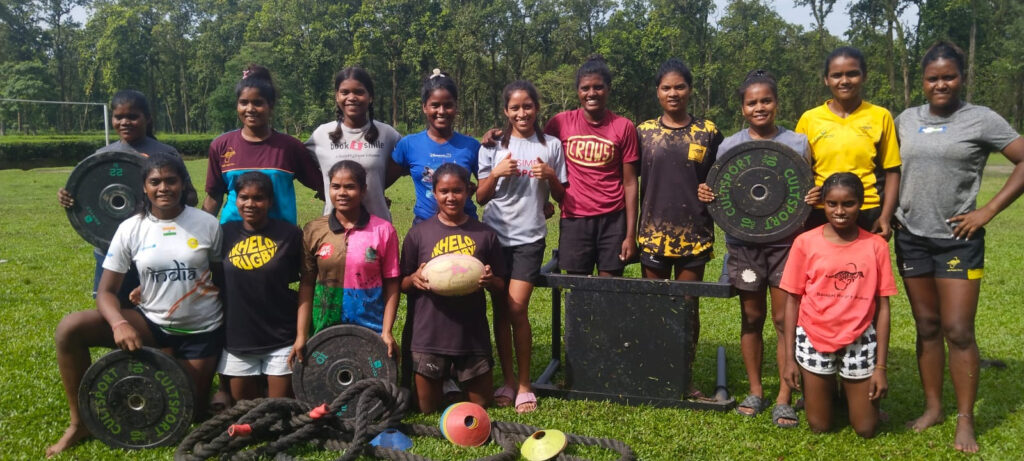Dhigurah island is probably the most beautiful island you’ve never heard of in the Maldives. It’s a local island without the fancy overwater resorts that are famous in the Maldives, but instead it has a long and wonderful white sand beach.
If you’re wanting to see the Maldives on a budget, this is one of the best places to do it. Dhigurah has all of the amazing tropical scenery you’d expect from the Maldives, plus family-owned hotels that are as low as $70 USD per night!
We recently visited two local islands in the Maldives — Dhigurah and Fulidhoo — and couldn’t be happier with our choice. They were both nice and different.
This travel guide will explain how to get to Dhigurah island, what to do there, where to stay, and everything else you need to know before you go!
Where To Stay In Dhigurah
How To Get To Dhigurah Island
There’s no airport in Dhigurah, so you first have to fly into the capital of the Maldives at Male International Airport (MLE), which is about 100 kilometers (60 miles) from Dhigurah.
From Male, you can take a speedboat or ferry directly to Dhigurah, or you can take a seaplane or domestic flight to one of the nearby islands and then get a boat the rest of the way.
Dhigurah island
• By Public Speedboat
The main way to get to Dhigurah is by public speedboat, and that’s how we went. There are daily departures in the morning and afternoon from Male airport and the city.
The speedboat journey to Dhigurah takes 2 hours and costs about $50 USD per person one way. Kids above 3 years old pay full price.
The boat ride usually isn’t too bumpy (depending on weather), and they have a toilet and plenty of room for storing luggage. The boats are new and the seats are comfortable. They also give you free bottled water.
The boats from Male to Dhigurah depart at 11 AM and 4:30 PM (Fridays 10 AM). The return boats from Dhigurah to Male depart at 6:30 AM and 1:30 PM (Fridays 1:45 PM). There’s a brief stop in Dhangethi island on the way to Dhigurah.
However, keep in mind there are multiple speedboat companies operating this route and the timetable seems to change occasionally, so I’d double check the timetable with your hotel in Dhigurah before you go.
You can ask your hotel in Dhigurah to book the speedboat for you, and then pay for it with your room bill when you arrive. That’s what we did, and paying by credit card spared us from having to carry lots of cash everywhere.
• By Private Speedboat
A private speedboat charter will be a lot more expensive than the public speedboats, but it may be more convenient in cases where you want to save time and need a direct connection to Dhigurah from one of the other islands in the Maldives.
You should be able to arrange this with your hotel in Dhigurah island.

Lazy palm tree
• By Domestic Plane
One of the easiest ways to get to Dhigurah is by taking a 20 minute domestic flight with Villa Air / FlyMe from Male to the airport in nearby Maamigili island (VAM), followed by a 5 minute taxi ride to the harbor and then a 20 minute speedboat ride to Dhigurah.
This route usually has 3 or 4 flights per day. One way ticket prices start at $170 USD for adults and $85 for kids under 12 years old, while kids under 2 fly free. The speedboat transfer is normally included in the price.
In rare cases where the waves are too rough for a normal boat crossing, then this may be your only option of getting to Dhigurah.
• By Seaplane
A seaplane ride is one of the most scenic and fun ways to get to Dhigurah, but also the most expensive.
Ticket prices start at $250 USD per person, and the journey involves a 30 minute flight to the Lux Resort in the South Ari Atoll, followed by a 10 minute speedboat ride to Dhigurah.
There isn’t a fixed schedule for the seaplane flights, so you’ll have to arrange it with your hotel in advance, and hopefully you can share the flight with other passengers going in the same direction.
• By Public Ferry
Last, but not least, you can take the public ferry from Male to Dhigurah. This is the slowest option, but it’s also the cheapest. The ferry ride to Dhigurah takes about 6 or 7 hours and costs $8 USD for a one way ticket.
This route is operated by MTCC several days per week, with morning and evening departures. You can confirm the current timetable with MTCC or with your hotel in Dhigurah, and they should be able to help you buy tickets as well.

The beach is never crowded here

Drone pic of Dhigurah island
How To Get Around The Island
Once you arrive in Dhigurah, the next step is getting around the island.
Thankfully, the whole island is small enough to be walkable. You can get everywhere on foot! From end to end, Dhigurah is 4 kilometers long (3 miles), and the width of the island is only about 100 to 200 meters. It’s a long and skinny shape.
This is one of the things we really liked about Dhigurah island, because it’s so convenient and you don’t have to pay for transport. However, the hotels do have bicycles you can rent for a half day or full day if you’d like.
Best Things To Do In Dhigurah Island
• North West Beach / Bikini Beach
The main beach in Dhigurah is called North West Beach and it spans the entire west side of the island. This is the island’s designated ‘bikini beach’ where tourists are welcome to wear swimsuits and go suntanning.
It’s a beautiful beach with palm trees, lots of little hermit crabs, and not too many people. The water is calm enough for kids to swim. If the sky is clear, you can also watch the sunset on the beach.
For snorkeling, there’s a spot near the halfway point, called Turtle Reef, where you can swim with baby sharks and sea turtles only a short distance from the shore!
The beach in Dhigurah is actually one of the longest beaches in the Maldives, and it’s how the island got its name — Dhigurah means ‘long island’ in the local language.

The perfect place to pull up a chair

Drone pic of the bikini beach
• Long Beach Sandbar
One of the main attractions of Dhigurah is the sandbar on the southern end of the island, which is called Long Beach. This is a really nice spot with snow white sand and shallow turquoise water, perfect for swimming or going for a walk.
From any of the hotels in northern Dhigurah, you can reach the sandbank by walking for 1 hour on the beach or through the jungle. We preferred the jungle path because it’s more shaded and you can see lizards and other animals.
The best time to get to the sandbar is 9 or 10 in the morning when there are less people and the sun isn’t too hot yet. If you don’t feel like walking, it’s also possible to go with a bicycle or rikshaw from your hotel.
If you keep following the sandbar to the end at low tide, you can actually walk all the way to the neighboring LUX Resort, although you’re not supposed to be there if you aren’t a guest.
Remember to bring plenty of water because it can get very hot here at midday, and there’s nowhere to buy drinks at the sandbar. There are some free sun chairs and umbrellas near the end of the beach where you can leave your stuff while you go swim.

The sandbar at Long Beach

Drone pic of the sandbar. It’s at the very end of the island.

Shallow water at the sandbar
More Things To Do In Dhigurah
- Whale Shark Safari: One of the most popular activities in Dhigurah island is swimming with whale sharks. You’re not guaranteed to see whale sharks, of course, but there’s a pretty good chance all throughout the year. Lots of other tours come here for the same reason, so you want to try to be the first one to spot a shark before the crowds arrive. This excursion normally lasts 2 or 3 hours.
- Dolphin Cruise: It’s common to see dolphins near Dhigurah. They’re usually moving too fast to snorkel with, but it’s still fun to watch a pod of dolphins from the boat.
- Manta & Reef Shark Cruise: The reef sharks and manta rays are also common in the Maldives, and they have 2 or 3 hour boat excursions to go see them. There’s a manta ‘cleaning station’ near Dhigurah where the manta rays like to visit and get cleaned by small fish, so you have a good chance of seeing them there.
- Resort Excursions: The hotels in Dhigurah can arrange a half day excursion to some of the nearby 5 star resorts like Amaya Kuda Rah, Centara Grand Island, Vakarufalhi, or Vilamendhoo. This can be a fun way to experience one of the Maldives’ luxury resorts without paying full price. These packages typically include transport there and back, plus access to facilities like the resort pool and spa, and an allowance for food and drinks at the resort while you’re there.
- Fishing Excursions: The southeast corner of the Ari Atoll is supposed to be a good place for big game fishing. If you’re lucky, you can catch sail fish, king fish, yellow fin tuna, and other kinds of fish to eat.
- Scuba Diving: Dhigurah is known as one of the best islands in the Maldives for scuba diving. There are a bunch of good dive sites in this area where you can see lots of nice fish and coral.
- Watersports: There are lots of watersports available on Dhigurah island, including kayaking, kiteboarding, parasailing, windsurfing, tube rides, and jet skiing.

Drone pic of Dhigurah — a gem of the Maldives
How Long To Stay
This is a small island, so you can wander most of it and see the best highlights in 2 or 3 days, although it would be easy to stay longer. We stayed 3 days in Dhigurah, and would’ve been happy to stay a week or two!
If you’re like us, being at the beach and swimming in the ocean never really gets old, and you could spend a couple of extra days seeing the whale sharks and doing other excursions near the island.


Other Tips For Visiting Dhigurah
- ATM: There’s one ATM in Dhigurah on the north end of the island near the ferry terminal, and it worked well in our experience, although I’d try to use the ATM at the airport first rather than relying on this one. We used the Dhigurah ATM to withdraw a big wad of cash during our stay and had no issues with a U.S. issued debit card. The machine dispenses Maldivian Rufiyaa.
- Currency: US Dollars are accepted everywhere on the island, although you’ll usually get slightly better rates with Maldivian Rufiyaa. Just keep in mind Rufiyaa can’t be used outside of the Maldives, so you don’t want to have any left over at the end of your trip. There isn’t a money exchange in Dhigurah, so it’s best to do this in Male airport.
- Credit Cards: You’ll want to double check, but many hotels in Dhigurah allow you to pay your entire bill by credit card, including the speedboat transfers. Ours let us do that. There may be a fee for this (like 3 to 5 percent), but in my opinion it’s worth it for the convenience. However, keep in mind the restaurants and minimarkets in Dhigurah usually don’t accept card, so you’ll need to bring at least some cash.
- Dress Code: Maldives is a Muslim country, and the local islands like Dhigurah have a conservative dress code since there are mostly locals living here. You’re not supposed to wear swimsuits or revealing clothes except at the designated ‘bikini beach,’ although we saw plenty of people breaking this rule, so it doesn’t seem to be strictly enforced. Still, if you want to stay out of trouble, it’s best to follow this rule and cover up when you’re not on the beach.
- Alcohol: They don’t allow alcohol on Dhigurah island, but you can get it if you visit one of the nearby resorts. We never heard any noisy mosques on the island, so you don’t have to worry about that.
- Mosque: There is a mosque on the island, but it was quiet. We never heard any noise from it.

Paradise in the Maldives

Walking on the sandbar
- Electricity: We stayed at a budget hotel in Dhigurah and still had 24/7 electricity, so you don’t have to worry about outages here.
- Cell Service: Our phones had decent 4G reception with Ooredoo (through T-Mobile) in the town area and also at the Long Beach sandbar.
- WiFi: There is fast and reliable WiFi in Dhigurah, even in the budget hotels.
- Drones: Most of the fancy resorts in Maldives don’t allow drones at all, but since Dhigurah is a local island, I was able to bring and use a drone with no issues. I confirmed this with my hotel in advance. The sandbar at the end of Long Beach is a great place for taking drone pictures.
- Wildlife: You can see giant fruit bats (flying foxes) in the trees on Dhigurah, and also several kinds of birds, lizards, and crabs.
- Mosquitoes: We mainly got attacked by mosquitoes when we were too close to the jungle. If you’re lounging in the shade near the beach, try to stay in a breezy area to keep the mosquitoes away. Some of the shady spots nearest the beach have enough wind to be safe from mosquitoes.
- Malaria: The entire country of Maldives has been malaria free since 1984, so you don’t have to worry about that, although there may be some dengue fever. We used bug spray when we were eating at outdoor restaurants.
- Safety: In general, Maldives is a very safe country, with one of the lowest murder rates in the world. We always felt safe here, and I haven’t heard of any bad incidents on the island.
- Hospital: There’s a small health center in Dhigurah, but for a serious emergency you’d need to go to the hospital in Malé. That’s true for the resort islands in the Maldives too, though.
- Food: The local Maldivian food is kind of like Indian food, so not everyone might enjoy it, but you can also get the usual western favorites like pizza, burgers, and steak.
- Where To Eat: There are several good restaurants in Dhigurah with local, western, and Asian food for relatively low prices. Check out Cafe Dune, Beach View Cafe, Malaveli, or Shell Restaurant.

Crystal clear water
Dhigurah Hotels
Best Time To Visit The Maldives
Like the rest of the Maldives, there’s a dry season in Dhigurah from January to April. This is the best time to visit the island because the weather is less rainy and more sunny.
There are more tourists in Maldives at this time, but the island never felt crowded at all in our experience, and we visited in January.
The wettest months in the Maldives are from September to December. You can still visit Dhigurah at this time, but you’re more likely to have some rain.

We really enjoyed visiting Dhigurah!
More Maldives Travel Guides
Thanks for looking! I hope you enjoyed this travel guide for Dhigurah island in the Maldives. It’s truly paradise on a budget.
Don’t forget to check out my travel guide for Fulidhoo island as well! There’s a beach in Fulidhoo where you can see lots of nice stingrays, turtles, and nurse sharks every day.
Source link





